First, what is Elf on the Shelf?
Elf on the Shelf is a cute little elf doll with a book for families with young kids. The idea behind the elf is that it watches over your kids and every night goes and reports to Santa about whether they have been good or bad.
Kids can tell the elf everything they would like for Christmas but aren’t allowed to touch it – or it will lose its magic – and Santa has forbidden it to speak to kids. The accompanying book explains all of this and encourages kids to name their elf.
Parents can buy other official merchandise, such as pets, clothing for the elf, and lots of cute accessories, sold on Etsy by other families.
Every night parents move the elf to a new spot and design some cute or funny scene where the elf might be doing something naughty. The elf might be baking cookies, making snow angels in flour, or stealing money from a kids’ piggy bank. In the morning, kids have to find the elf.
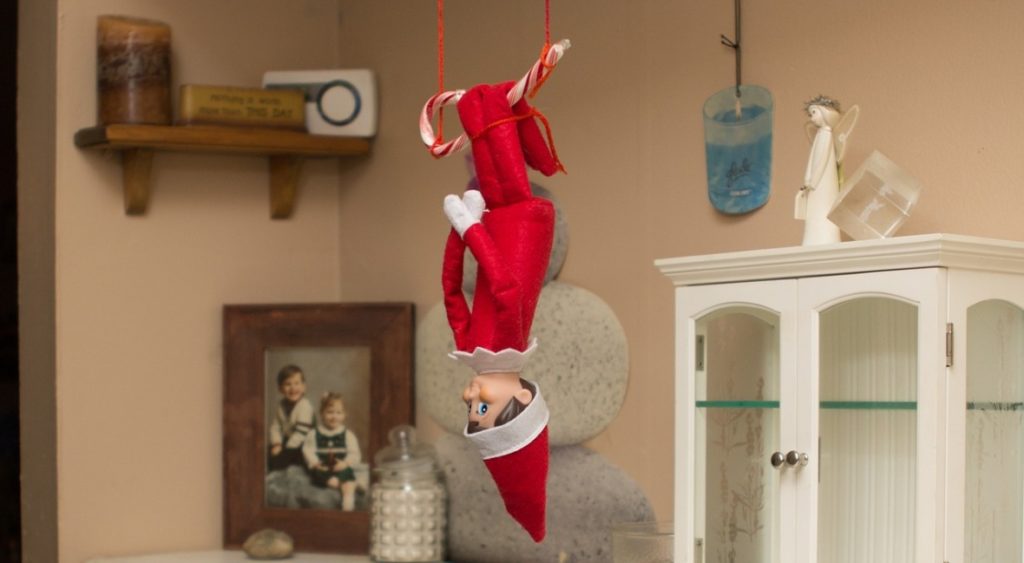
We get commissions for purchases made through links in this post. As an Amazon Associate, we earn from qualifying purchases.
What’s wrong with Elf on the Shelf?
That all sounds pretty cute, right? What’s so wrong with Elf on the Shelf?
First off, we find it creepy that a surveillance elf is watching our actions in our house.
Next, December is already a busy month, and moving the elf around becomes another thing for parents to do. They must come up with 25 different ideas and take time to execute them every night.
There’s been more than a parent or two who has rushed out of bed in the morning after suddenly remembering that they forgot to move the elf.
But maybe you find that part fun and have time to do creative things with the elf.
So, what is TRULY wrong with Elf on the Shelf?
1. Elf on the Shelf uses threats as a way of controlling kid behavior.
The elf is used to control, bribe, and threaten children. “You better stop being bad, or the elf will tell Santa, and you won’t get any presents”!
This is never an appropriate way to handle challenging behavior. Christmas presents are entirely unrelated to whatever your child might be doing at that moment and are so far in the future that the idea of losing them does little to change behavior in the long term. Solutions (not punishments) are only effective when related to the behavior.
If your child is genuinely having behavioral problems, take the time to address those instead of hoping that threats will magically solve them for you. Work on solutions to do better in the future instead of punishing kids for what happened in the past. See what you can change to eliminate or avoid those situations. This focuses on what your child is dealing with and helps them learn and grow. It will allow you to stay calm and show your kids that mistakes are excellent learning opportunities.
Promising presents for good behavior is bribery. Bribing kids may seem to work in the moment, but in the long run, it teaches kids that they should only do things if they will be given a reward. They don’t learn to manage themselves or consider how their actions impact their lives. Bribery also tells them that we don’t believe in them. It says, “I don’t think you are capable of doing this unless promised something.”
And guess what? No one is going to return all of their kid’s presents. It is an empty threat, and kids tend to know that. Only say things that you are willing to follow through on.
2. Elf on the Shelf places the focus of Christmas on how much kids can get for themselves.
Gifts are a fun part of Christmas, and there is nothing wrong with that.
But we don’t want to raise entitled kids who expect to be given everything they want. We can spend the month of December talking about more than just Santa and presents.

- Looking to buy gifts? Read: Simplicity Parenting Toy List for some criteria about what makes a great toy.
3. Elf on the Shelf labels kids as “good” or “bad” and seeks punishment for bad behavior.
We often label kids as bad when they do things we don’t like, but in reality, what they did wasn’t bad. When a toddler pulls over the garbage can, are they bad or curious? We are often making MORAL issues out of DEVELOPMENTAL ones. See the difference?
Yes, we don’t want garbage on the floor, and we must take time to clean it up, but maybe we shouldn’t have left the trash where they could reach it. Kids can help clean up and then be given something that they can touch. We can all move on without needing to do any name-calling or labeling.
Now, there are times when our kids act in less-than-desirable ways, and it’s not simply them being curious. Elf on the Shelf threatens punishment for these moments, but this does nothing to address the situation.
In moments like this, our kids don’t need to be told that they are bad and punished. They need guidance, redirections, and training. We want to give them the tools to do better in the future and set boundaries to help them do so.
Read our post on productive ways to address problematic behavior without punishment. You might be surprised to learn that punishment doesn’t accomplish what you think it does.
4. Elf on the Shelf teaches the wrong ideas about gifts.
Finally, if kids work for gifts by being good, it means that they “earn” them, and so those things are, in fact, no longer gifts. Kids begin to think, “Of course, I got all these things! I deserve them. I earned all this by being good!” This creates a sense of entitlement and eliminates the need to be thankful.
This is not what we want kids to think about gifts.
We want our kids to know that when they get a gift, it is because people love and care about them. Others chose to be generous, and it is not because of anything that our kids did. Our kids can respond by being thankful when they receive gifts this way. They can feel loved by all of the people who surround them in their lives.
Elf on the Shelf teaches our kids the OPPOSITE of this. Why would we want that to be part of our Christmas traditions?
What can you do instead?
You may love that Elf on the Shelf creates a fun Christmas tradition. The elf doll itself is not bad once separated from the ideas of surveillance. You can still move the elf around the house and create cute little scenes for your kids to find every morning.
Or you can create holiday traditions of your own! Come up with traditions that focus on family, giving, and thankfulness. The best memories are made with time spent together.
Fun Family Christmas Traditions
1. Hide things in your house or on the Christmas tree for your kids to find
Pick a unique ornament that you hide in the tree every year. Or come up with something of your own that you hide throughout the house for your kids to find each day in December.
2. Make Christmas cards for friends and family
Cards are an excellent way to remember those we love at Christmas. Buy some blank cards and let kids decorate the cards however they would like. Or simply let kids use red and green markers, crayons, stickers, and paint to decorate large pieces of paper. Once dry, cut the paper down to make multiple cards.
You and your kids can work together to write the cards and get them mailed off. Kids love to attach stamps to envelopes.

3. Pick out a Christmas tree
Select a day or weekend every year that your family heads the tree lot to get a tree. Bring the tree how and decorate it together. Maybe add some hot chocolate to help it feel even more special. This can kick off the Christmas season and become a day you look forward to every year.
4. Decorate the house
There is something magical about Christmas decorations, and even small kids can be involved in setting them up. Something as simple as a string of lights can bring holiday cheer. Paper snowflakes can be a fun and inexpensive project for kids to make and hang up around the house.
5. Decorate gingerbread houses
Gingerbread houses are fun for all ages and make incredible decorations once finished. Inexpensive kits make them simple to create.
Think about adding some additional candy of your own. Place the house on a cookie tray to provide a base and minimize mess.
Protip: preassemble gingerbread houses using a hot glue gun. This will eliminate the need to hold the house together as frosting dries and keep the house from falling down while decorating.
The hot glue pops right off should you decide to eat any part of the house.

6 . Watch Christmas movies
Over the month of December, snuggle up as a family and watch Christmas movies. Or pick a day to have a movie marathon and watch all your favorites. There are good Christmas movies for kids of all ages.
7. Bake cookies for the neighbors
Baking cookies is a fun, festive holiday activity. Add some red and green sprinkles and frosting if you’re up for a bit more mess. Kids can experience the joy of giving as you deliver plates of cookies to your neighbors.
Protip: You can avoid the need to frost all cookies by using food coloring to make red and green sugar cookie dough. Allow kids to roll the dough and use cookie cutters. You can make the dough ahead of time.
8. Select and wrap gifts for siblings and grandparents
This is a fantastic way to get kids thinking about others during the holiday season. Have your kids brainstorm ideas for each person on their list. Help them think about what that person might honestly like but let kids decide what gift to give.
Plan time for shopping and wrapping. Let kids do the wrapping. It won’t be perfect, but they will be pretty proud of their work.
9. Select and wrap presents for pets
Pets are part of the family, too, and it can be fun to celebrate with them. Each of your kids can make or buy a gift for your family’s pets. This is another way to practice giving and placing the focus on others. Kids will have fun helping the pets open the gifts.
10. Go ice skating
Ice skating brings on the winter vibes and adds to the festive feel of the season. If you live in a cold climate, pick an outdoor ice skating rink with holiday decorations.
11. Tour the Christmas lights in the neighborhood
Pick an evening to stay up late and head out from a family walk or drive to see all the Christmas decorations in your neighborhood. Bring bags of popcorn to make the trip extra fun.
12. Wear matching pajamas
This can be a fun Christmas Eve tradition and makes for cute family photos. Everyone can get a new pair of pajamas, wear them to bed, and spend Christmas day in them.
13. Create an advent calendar to count down to Christmas
Advent calendars are a festive way for kids to anticipate Christmas day and see how long they still have to wait.
You can make one of your own, buy one to use every year, or buy a single-use calendar. Set a time of day that you open it together.

14. Visit the senior center and sing Christmas songs
This can be a great way to bring joy to your community and show your kids that Christmas is more than just about getting presents. They can learn how great it is to brighten the day of others. Plus, who doesn’t love singing Christmas songs?
15. Listen to Christmas music
Chrismas songs add to the festivity and of the season. The nostalgia evoked by Christmas music, along with the upbeat tempo, had been shown to make us happier. So turn up the radio and enjoy.
16. Eat Christmas Brunch
After opening presents, sit down and enjoy a delicious brunch together as a family. Have your kids help create a menu and involve them in the preparations. They will be excited to share the dish that they made.
17. Have a sleepover around the tree
Remember when sleeping on the floor in a sleeping bag was extra exciting? Pick a night in December when the whole family can camp out around the Christmas tree. Combine this with a Christmas movie night for extra fun.
Consider setting up unique traditions for the beginning of December, Christmas Eve, and Christmas Day.
Ditch Elf on the Shelf
As parents, we are creators of culture and need to be careful what we promote and model for our kids. We want a world filled with kind, generous, and thankful people. Are we helping our kids to become those people?
Consider ditching Elf on the Shelf and creating your own unique traditions. Christmas can still be magical.
- Looking for a fun backyard toy for the whole family? Check out: Fun Slacklines for Kids and Families – Beginner Friendly!

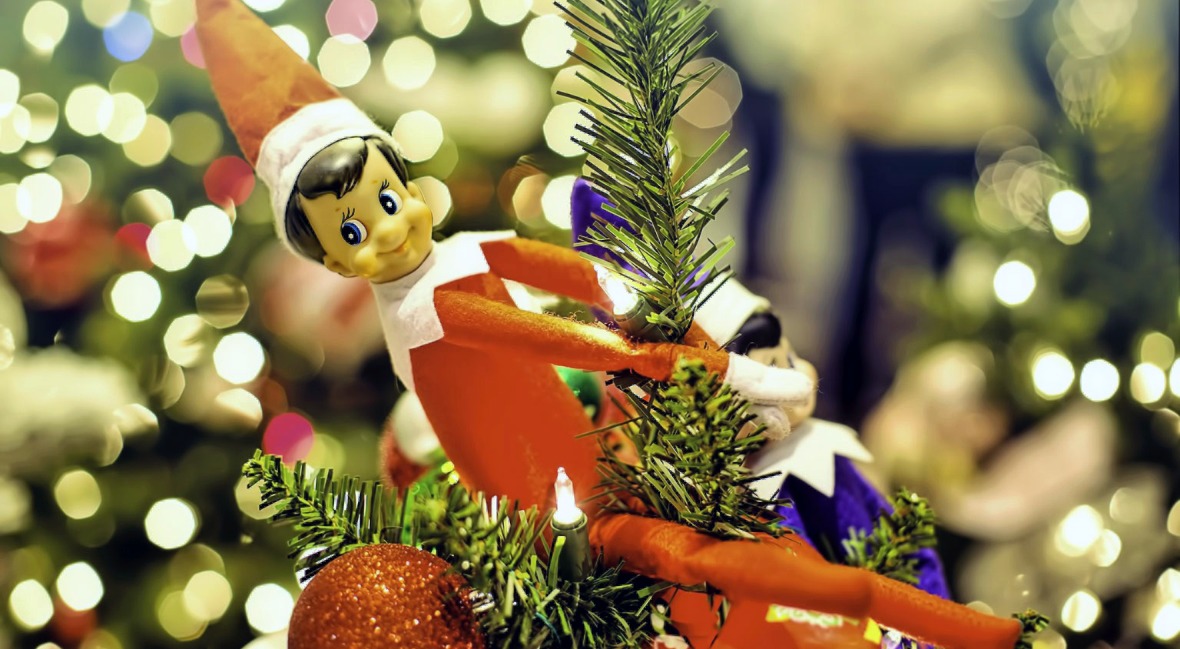

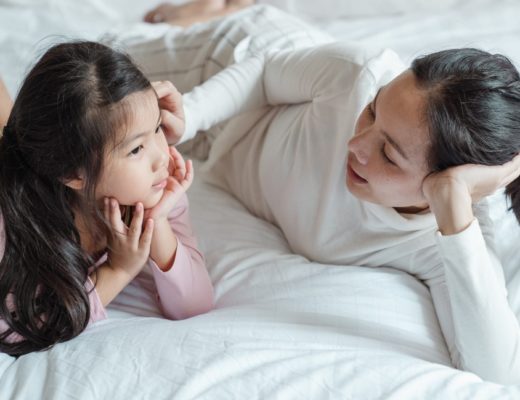

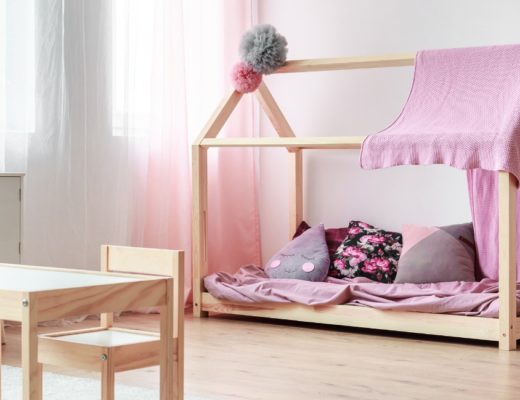
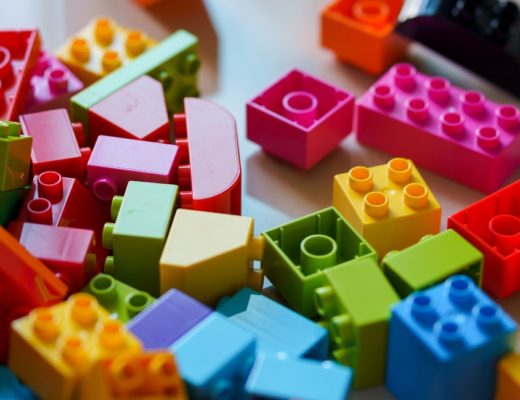
No Comments